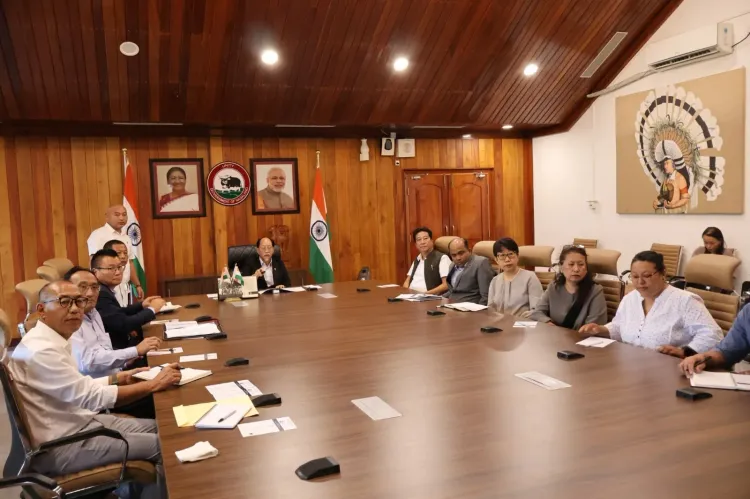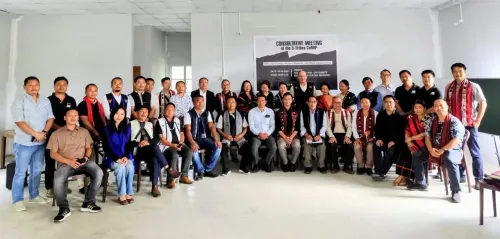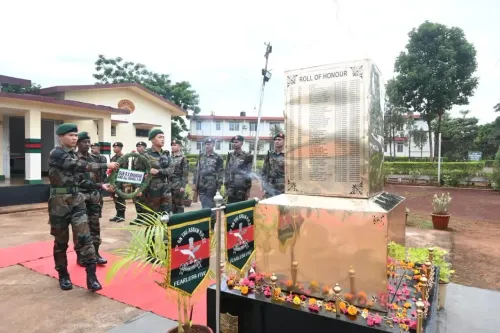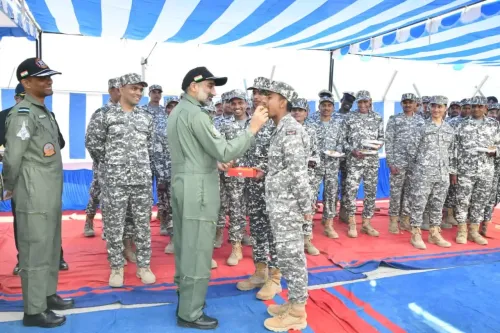Is Nagaland Overcoming Its Terrain Challenges to Enhance Education Infrastructure?

Synopsis
Key Takeaways
- Nagaland is making significant progress in education infrastructure.
- Community participation is essential for effective maintenance.
- Quality education is fundamental for development.
- Government efforts aim to re-enroll one lakh students by 2030.
- Improved infrastructure can lead to increased student enrollment.
Kohima, Aug 2 (NationPress) The Chief Minister of Nagaland, Neiphiu Rio, emphasized on Saturday that, irrespective of the challenging geographical landscape of the state, particularly in its remote areas, there has been a steady advancement in the transformation of educational infrastructure.
During a virtual inauguration of 51 educational infrastructures funded by Samagra Shiksha, the Chief Minister urged the local communities to take ownership of the facilities provided by the government, ensuring they are properly maintained and efficiently utilized.
He underscored the essential role of community involvement, asserting that while quality infrastructure is crucial, ongoing monitoring and periodic upgrades are equally important.
CM Rio remarked that this initiative represents a vital step in the continuous journey to enhance educational infrastructure and extended his appreciation to the Government of India for their unwavering support.
He also praised the dedication of the Samagra Shiksha team, led by State Mission Director, L Jamithung Lotha.
Rio noted that many existing infrastructures in the state remain provisional and highlighted the pressing need for durable structures built with high-quality craftsmanship.
In acknowledging the efforts of the Department of School Education in their pursuit of improvement despite numerous obstacles, he called for a detailed assessment to identify their needs and requirements.
Stressing the significance of quality education, CM Rio stated it is fundamental to development, empowering citizens, fostering economic growth, and creating opportunities for societal prosperity.
He also pointed out the critical role education plays in shaping responsible citizens for a brighter future in Nagaland.
The Chief Minister urged for a unified effort to establish a safe, inclusive, and nurturing environment conducive to the holistic development of students.
During the event, Kekhrielhoulie Yhome, Advisor for School Education and State Council of Educational Research and Training (SCERT), shared that out of 16,087 rooms in government schools, 13,767 rooms (or 86 percent) are utilized for teaching purposes.
The remaining spaces serve as laboratories, libraries, and teachers' rooms, among others.
He categorized these rooms into four groups: those in good condition, those needing major repair, those needing minor repair, and those that are dilapidated.
Yhome mentioned that schools are further classified into pucca structures, partially-pucca structures, and kutcha structures.
The funding from Samagra Shiksha has been instrumental in fulfilling the school building requirements.
Yhome highlighted that department officers are diligently working towards the vision of Viksit Bharat, aiming to re-enroll approximately one lakh students in the school system by 2030, which will enhance their livelihoods and offer financial relief.
He expressed optimism that improved infrastructure will lead to increased student enrollment in government schools.









